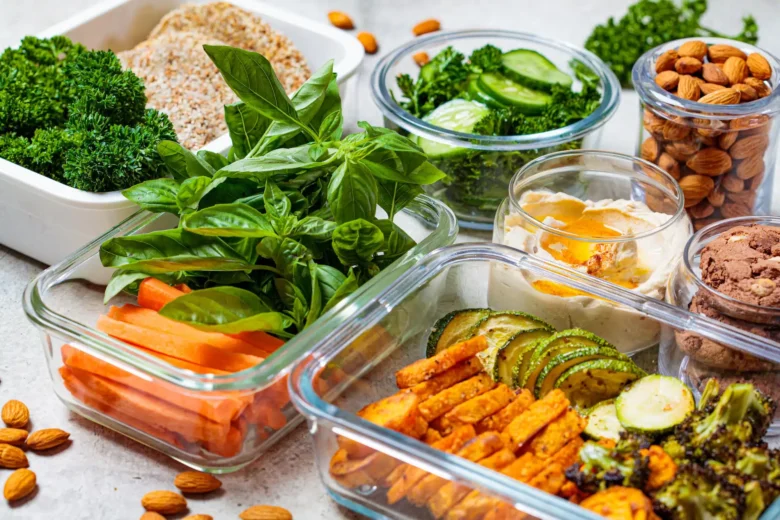Eating healthy doesn’t have to drain your wallet. While marketing campaigns might convince you that exotic goji berries and expensive acai powders are essential for optimal health, some of the most nutritious foods on the planet are surprisingly affordable and readily available at your local grocery store.
The term “superfood” often gets thrown around as a marketing buzzword, but at its core, it refers to nutrient-dense foods that provide exceptional health benefits relative to their calorie content. These foods are packed with vitamins, minerals, antioxidants, and other compounds that support everything from heart health to cognitive function.
The good news? You don’t need to spend a fortune to fill your plate with these nutritional powerhouses. Many budget-friendly options offer just as many health benefits as their pricier counterparts. Focusing on accessible, affordable superfoods allows you to create a nutrient-rich diet that supports your health goals without exceeding your budget.
This guide will introduce you to seven superfoods that deliver maximum nutrition for minimal cost, plus practical tips for incorporating them into your daily meals.
Why Superfoods Matter for Your Health
Superfoods earn their status through their exceptional nutrient density. Unlike processed foods that provide empty calories, these whole foods deliver a concentrated dose of essential nutrients your body needs to function optimally.
The health benefits of regularly consuming superfoods are well-documented. They’re typically rich in antioxidants, which help combat oxidative stress and reduce inflammation in the body. This can lower your risk of chronic diseases like heart disease, diabetes, and certain cancers. Many superfoods also support immune function, brain health, and energy levels.
What makes certain foods “super” is their ability to provide multiple nutrients in significant quantities. For example, a single superfood might offer high levels of vitamin C, fiber, potassium, and antioxidants all in one serving. This nutrient density means you get more nutritional bang for your buck with every bite.
The key is choosing superfoods that are both nutritionally exceptional and financially accessible. The following seven options prove that eating well doesn’t require a premium price tag.
Superfood #1: Eggs
Often called nature’s perfect protein, eggs are one of the most affordable and versatile superfoods available. A dozen eggs typically costs just a few dollars, making them an economical source of high-quality nutrition.
Eggs contain all nine essential amino acids, making them a complete protein source. They’re also rich in choline, which supports brain function and development, and lutein and zeaxanthin, antioxidants that promote eye health. The vitamin D content in eggs supports bone health and immune function, while the B vitamins help convert food into energy.
One large egg provides about 6 grams of protein and contains healthy fats that help with nutrient absorption. Despite previous concerns about cholesterol, research shows that eggs can be part of a heart-healthy diet for most people.
The versatility of eggs makes them easy to incorporate into any meal. Scramble them for breakfast, hard-boil them for snacks, or use them in baking and cooking throughout the day.
Superfood #2: Sweet Potatoes
Sweet potatoes pack incredible nutritional value into an inexpensive package. These vibrant root vegetables are loaded with beta-carotene, which your body converts to vitamin A for healthy vision, immune function, and skin health.
A medium sweet potato provides over 400% of your daily vitamin A needs, along with significant amounts of vitamin C, potassium, and fiber. The fiber content supports digestive health and helps regulate blood sugar levels, while the potassium supports heart health and proper muscle function.
Sweet potatoes also contain antioxidants like anthocyanins, particularly in purple varieties, which may help reduce inflammation and support brain health. Their natural sweetness makes them a satisfying alternative to processed snacks.
These versatile vegetables can be baked, roasted, mashed, or even spiralized into noodles. Their natural sweetness works well in both savory and sweet preparations, making them suitable for any meal of the day.
Superfood #3: Beans and Lentils
Legumes like beans and lentils are nutritional powerhouses that cost pennies per serving. They’re excellent sources of plant-based protein, fiber, and various vitamins and minerals essential for optimal health.
A single cup of cooked lentils provides about 18 grams of protein and 15 grams of fiber, along with significant amounts of folate, iron, and potassium. The high fiber content supports digestive health and helps maintain stable blood sugar levels, while the protein makes them satisfying and filling.
Beans and lentils are also rich in antioxidants and phytonutrients that may help reduce inflammation and lower the risk of chronic diseases. The folate content is particularly important for pregnant women and supports healthy cell division throughout the body.
Different varieties offer slightly different nutritional profiles. Black beans are high in anthocyanins, chickpeas provide good amounts of manganese and folate, and kidney beans offer plenty of protein and fiber. Buying dried legumes is even more economical than canned versions.
Superfood #4: Oats
Oats are an incredibly affordable whole grain that delivers impressive health benefits. A container of rolled oats costs just a few dollars and provides numerous servings of this heart-healthy superfood.
The standout feature of oats is their beta-glucan content, a type of soluble fiber that helps lower cholesterol levels and supports heart health. This same fiber also helps regulate blood sugar levels and promotes feelings of fullness, making oats an excellent choice for weight management.
Oats provide good amounts of protein, containing all essential amino acids, though not in optimal ratios. They’re also rich in manganese, which supports bone health and wound healing, and contain antioxidants called avenanthramides that have anti-inflammatory properties.
The versatility of oats extends far beyond breakfast porridge. Use them in smoothies, baking, homemade granola, or even savory dishes. Steel-cut oats, rolled oats, and quick oats all offer similar nutritional benefits, so choose based on your texture preferences and cooking time constraints.
Superfood #5: Spinach
Leafy greens like spinach are among the most nutrient-dense foods available, and they’re remarkably affordable. Fresh spinach is budget-friendly, while frozen spinach offers even greater value and longer storage life.
Spinach is loaded with vitamins A, C, and K, along with folate, iron, and potassium. The vitamin K content supports bone health and proper blood clotting, while the folate is essential for DNA synthesis and red blood cell formation. The iron in spinach supports oxygen transport throughout the body.
This leafy green also contains powerful antioxidants like lutein and zeaxanthin, which support eye health, and nitrates that may help improve exercise performance and cardiovascular health. Despite being low in calories, spinach provides substantial amounts of these important nutrients.
Fresh spinach works well in salads, sandwiches, and smoothies, while frozen spinach is perfect for cooking applications like pasta dishes, soups, and casseroles. The mild flavor of spinach makes it easy to add to almost any dish without overwhelming other flavors.
Superfood #6: Greek Yogurt
Greek yogurt offers exceptional nutritional value at a reasonable price point, especially when purchased in larger containers. This protein-rich superfood provides probiotics that support digestive and immune health.
A single serving of Greek yogurt can contain 15-20 grams of protein, making it an excellent choice for muscle maintenance and satiety. The probiotics in yogurt support gut health by promoting beneficial bacteria in the digestive system, which can improve digestion and immune function.
Greek yogurt is also rich in calcium for bone health, vitamin B12 for nerve function and red blood cell formation, and riboflavin for energy metabolism. The protein content makes it more filling than regular yogurt, helping with appetite control and weight management.
Choose plain Greek yogurt to avoid added sugars, and sweeten it naturally with fresh fruit, honey, or a small amount of maple syrup. It works well as a base for smoothies, a substitute for sour cream, or simply eaten on its own with toppings.
Superfood #7: Bananas
Bananas are one of the most affordable and convenient superfoods available year-round. These portable fruits are packed with nutrients that support heart health, exercise performance, and overall well-being.
The potassium content in bananas supports heart health and proper muscle function, while the vitamin B6 helps with brain development and function. Bananas also provide vitamin C for immune support and fiber for digestive health.
Bananas contain natural sugars that provide quick energy, making them excellent pre- or post-workout snacks. The pectin in bananas may help regulate blood sugar levels and support digestive health. As bananas ripen, their antioxidant levels actually increase.
The convenience factor of bananas makes them perfect for busy lifestyles. They come in their own natural packaging, require no preparation, and can be eaten anywhere. Overripe bananas work well in baking and smoothies, reducing food waste.
How to Incorporate These Superfoods Into Your Diet
Adding these budget-friendly superfoods to your daily routine doesn’t require dramatic dietary changes. Start by incorporating one or two new foods each week until they become regular parts of your meals.
For breakfast, try Greek yogurt with sliced bananas and a sprinkle of oats, or make a spinach and egg scramble. Sweet potatoes can be meal-prepped on weekends and used throughout the week in various dishes. Cook a large batch of beans or lentils and add them to salads, soups, or grain bowls.
Keep these superfoods visible and accessible in your kitchen. Store bananas on the counter, keep Greek yogurt at eye level in the refrigerator, and portion out oats in grab-and-go containers. Having healthy options readily available makes it easier to choose them consistently.
Consider batch cooking and meal prep strategies to make these foods more convenient. Bake several sweet potatoes at once, hard-boil a dozen eggs, or prepare overnight oats for busy mornings. These preparation strategies save time and ensure you always have nutritious options available.
Superfood Comparison Chart
|
Superfood |
Cost per serving |
Key nutrients |
Primary benefits |
|---|---|---|---|
|
Eggs |
$0.25 |
Protein, choline, vitamin D |
Complete protein, brain health |
|
Sweet potatoes |
$0.50 |
Beta-carotene, fiber, potassium |
Eye health, blood sugar control |
|
Beans/lentils |
$0.15 |
Protein, fiber, folate |
Heart health, sustained energy |
|
Oats |
$0.10 |
Beta-glucan, protein, manganese |
Cholesterol reduction, fullness |
|
Spinach |
$0.30 |
Vitamins A, C, K, iron |
Bone health, antioxidant protection |
|
Greek yogurt |
$0.75 |
Protein, probiotics, calcium |
Digestive health, muscle support |
|
Bananas |
$0.25 |
Potassium, vitamin B6, fiber |
Heart health, energy |
Start Your Affordable Superfood Journey Today
Eating nutrient-dense superfoods doesn’t require an expensive grocery budget or trips to specialty health stores. These seven affordable options prove that optimal nutrition is accessible to everyone, regardless of financial constraints.
The key to success lies in consistency rather than perfection. Start by adding one or two of these superfoods to your current meals, then gradually expand your repertoire as they become habits. Focus on variety to ensure you’re getting a wide range of nutrients throughout the week.
Remember that the most expensive superfood won’t benefit your health if it sits unused in your pantry. These budget-friendly options offer the perfect combination of nutritional value, affordability, and practicality that makes healthy eating sustainable long-term.
Frequently Asked Questions
Are frozen versions of these superfoods as nutritious as fresh?
Frozen versions of superfoods like spinach and berries are often just as nutritious as fresh options, sometimes even more so. Fruits and vegetables are typically frozen at peak ripeness, locking in nutrients. Frozen options also last longer and can be more cost-effective.
How can I make these superfoods more appealing to picky eaters?
Start by incorporating small amounts into familiar dishes. Blend spinach into smoothies, mix lentils into pasta sauce, or use sweet potato in baked goods. Gradually increase quantities as taste preferences adapt. Focusing on preparation methods that enhance flavor can also help.
Can I get all my nutrients from just these seven superfoods?
While these superfoods are nutritionally dense, a varied diet is important for optimal health. Use these as foundation foods and add other fruits, vegetables, whole grains, and lean proteins to ensure you’re meeting all nutritional needs.
How long can I store these superfoods?
Storage times vary by food. Bananas last 3-7 days at room temperature, eggs keep for 3-5 weeks refrigerated, and dried beans and oats can be stored for years in airtight containers. Greek yogurt typically lasts 1-2 weeks past its sell-by date when properly refrigerated.
Are there any people who should avoid these superfoods?
Most people can safely enjoy these foods, but individuals with specific allergies or medical conditions should consult healthcare providers. For example, people with kidney disease may need to limit potassium-rich foods like bananas and sweet potatoes.
References
- Harvard T.H. Chan School of Public Health. “The Nutrition Source: Eggs.”
- American Heart Association. “The Benefits of Sweet Potatoes.”
- Mayo Clinic. “Dietary fiber: Essential for a healthy diet.”
- Journal of Nutrition. “Beta-glucan health benefits in obesity and metabolic syndrome.”
- National Institutes of Health. “Folate: Fact Sheet for Consumers.”




